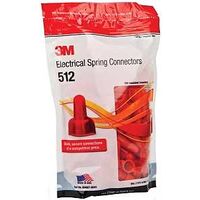petey_c
Senior Member
Dgonza9, Although that chart you showed and the NEC say that it's permissible to fit 16, 12 AWG wires in 3/4" EMT, another section of the NEC states that you can only have a 40% fill in that pipe. That's about 6, #12s. http://www.lanshack.com/DesigningConduitRuns.aspx
As has been said, you can use EMT as a ground, but I always run a ground wire anyway. I've seen runs of conduit rust away in the middle.
Were you pulling solid or stranded wire? Stranded is much easier to pull. You can use wire lube or Ivory liquid dish detergent to ease the pull. If you can use two 45s instead of a 90 that will also make pulling easier. You can use LBs (or LR/LL s) http://www.google.com/imgres?imgurl...efurl=http://www.amazon.com/Cantex-Industries . They allow you to get closer to your boxes.
The more couplings you use the more chances there are to have the "head" get stuck. Since you're right up there near Chicago land (where they use pipe for everything electrical...), you could probably give an electrician the measurements and have him (or her) bend the pipe for you for a couple of bucks. Too late now though.
The Divine Comedy was a good read, especially the liner notes (Penguin Publishing) that showed what Dante was referring to. I would've been lost without them. Good luck, Pete
As has been said, you can use EMT as a ground, but I always run a ground wire anyway. I've seen runs of conduit rust away in the middle.
Were you pulling solid or stranded wire? Stranded is much easier to pull. You can use wire lube or Ivory liquid dish detergent to ease the pull. If you can use two 45s instead of a 90 that will also make pulling easier. You can use LBs (or LR/LL s) http://www.google.com/imgres?imgurl...efurl=http://www.amazon.com/Cantex-Industries . They allow you to get closer to your boxes.
The more couplings you use the more chances there are to have the "head" get stuck. Since you're right up there near Chicago land (where they use pipe for everything electrical...), you could probably give an electrician the measurements and have him (or her) bend the pipe for you for a couple of bucks. Too late now though.
The Divine Comedy was a good read, especially the liner notes (Penguin Publishing) that showed what Dante was referring to. I would've been lost without them. Good luck, Pete





















































![Craft A Brew - Safale BE-256 Yeast - Fermentis - Belgian Ale Dry Yeast - For Belgian & Strong Ales - Ingredients for Home Brewing - Beer Making Supplies - [3 Pack]](https://m.media-amazon.com/images/I/51bcKEwQmWL._SL500_.jpg)






